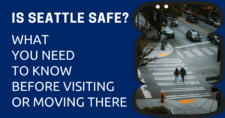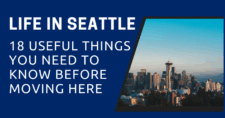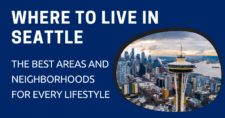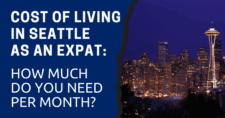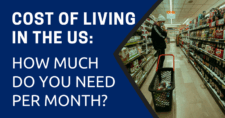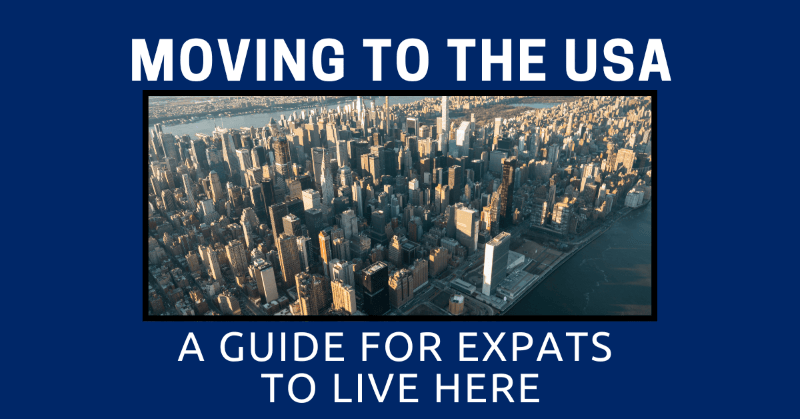
Living in the US comes with challenges like strict visas, high costs, and cultural differences, but it also offers great opportunities. This guide shares my personal experience to help you prepare for life as an expat in America.
I had been living in the US for many years. The main reason I moved there was for education. I studied at the University of Washington in Seattle for four years, which was an incredible experience. After graduation, I got Optional Practical Training (OPT), which allowed me to stay longer and gain work experience in my field. Even after my OPT ended, I kept visiting the US many times over the years.
I still remember how challenging that first year was. The visa process was difficult and very strict, the cost of living was high, and there were so many things I needed to figure out on my own. I had to find a place to rent, open a bank account, and handle countless other tasks just to settle in and live there comfortably.
Because of those experiences, I decided to write this article to share what I learned about moving to and living in the United States. This guide is based on my personal journey, and my goal is to help you understand what to expect as an expat so you can prepare yourself better and avoid the mistakes I made.
This article will take approximately 41 minutes to read. Don't have the time right now? No worries. Email the ad-free version of the article to yourself and read it later!
Disclaimer: This article may include links to products or services offered by ExpatDen's partners, which give us commissions when you click on them. Although this may influence how they appear in the text, we only recommend solutions that we would use in your situation. Read more in our Advertising Disclosure.
Contents
Key Takeaways
- Moving to the US is exciting but challenging, especially with the strict visa process and high cost of living.
- Each region has its own culture, lifestyle, and even laws, so where you live will shape your overall experience.
- To live comfortably in big cities, you should budget at least US$3,500–US$4,500 per month, with New York and similar cities costing much more.
- Healthcare is expensive, and insurance is a must if you don’t want to face huge medical bills.
- Tipping is expected almost everywhere in the service industry, usually 15%–20%.
- Opening a bank account is important since checks are still widely used in the US.
- Big cities like Seattle, New York, and Los Angeles offer strong job markets, especially in tech, finance, and healthcare.
- Making friends isn’t hard, as Americans are generally outgoing and open to conversation.
- If you plan ahead, understand the culture, and manage your budget wisely, life in the US can be a rewarding experience.
Geography
First and foremost, before diving into the details of moving and living in the US, I want to introduce you to the country’s geographical and cultural foundations.
The United States is a huge country with incredibly diverse geography. Each region has its own vibe, and every state has its own laws. Because of this, rules and regulations can vary widely depending on where you are. Sometimes, it can feel like you’ve stepped into a completely different country just by crossing state lines.
As you travel around the US, you’ll notice a mix of regional cultures, attitudes, landscapes, and climates. For example, people in California are generally more laid-back, while those in the New England region tend to be more direct and fast-paced. In the South, people often communicate in a more indirect and polite way compared to other parts of the country.
To help you get a clearer picture, I’ve grouped the US states by geography into several regions below. This will give you a better understanding of what to expect as you explore or move to different parts of the country.
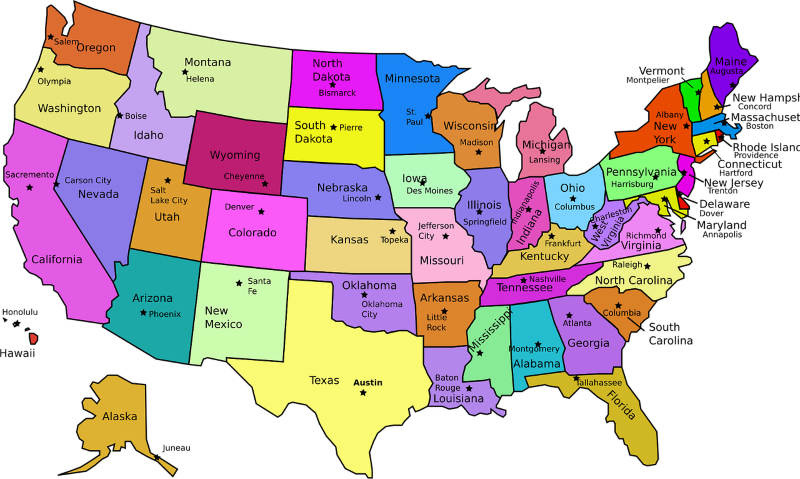
Northeast
The weather here is unpredictable, but overall, it’s slightly cool and humid. It includes parts of the Great Lakes (think of the US side of Niagara Falls) and the Appalachian Mountains. Its architectural style, institutions, and social norms are shaped by English cultural roots.
The region can also be subdivided further into the New England region, which is famous for its historic towns and seafood cuisine. If you’re into the good old English vibes, then it’s a great place to live.
Large cities include New York, Boston, Philadelphia, and Washington, D.C.
West
The region features a long coastline facing the Pacific Ocean, mountain ranges, deserts, forests, and valleys. The weather in the Pacific Northwest is cool and wet, whereas the southern part is hot and dry.
Multiculturalism is strong in this region. People here also tend to be laid-back and easygoing, less formal than those from the Northeast, and more direct than those from the South.
Large cities include Los Angeles, San Diego, San Francisco, and Seattle.
South
People in the South are polite, though their politeness is a bit like the Japanese honne and tatemae mentality. When it comes to local food choices, their unique fried chicken and barbecue are the best.
The region includes parts of the Appalachian Mountains in its northern area. Coastal plains, swamps, and wetlands are common. The weather here is warm and humid.
Large cities include Atlanta, Charlotte, Houston, and Tampa.
Midwest
The Midwest is mostly farmland and industrial hubs. The landscapes are plains and hills. The climate is similar to the Northeast. Urban areas include Chicago, Detroit, Minneapolis, and St. Louis.
Alaska
I separate Alaska as a region of its own. It is the largest US state, featuring tundra, forests, frozen ground, and mountain ranges. The weather is cold, and life is pretty rural. You might not want to go there except for sightseeing.
Hawaii
Hawaii is located far from the US mainland. It is shaped by a tropical climate, native Hawaiian cultural influence, and some elements of Japanese immigration.
Other Territories
Other US territories include Puerto Rico, the US Virgin Islands, American Samoa, Guam, and the Northern Mariana Islands. They are not popular among expats at the moment.
Cost of Living
Living in the US isn’t cheap. It has one of the highest costs of living in the world. The country is a major financial and tech hub that attracts people from all over the world.
In addition, the country’s economy is largely consumer-driven, and you can expect to see higher prices for goods and services compared to the rest of the world, but still lower than in some countries in Europe, like Switzerland, Iceland, and Norway.
The total cost of living per month in the US varies significantly based on where you live.
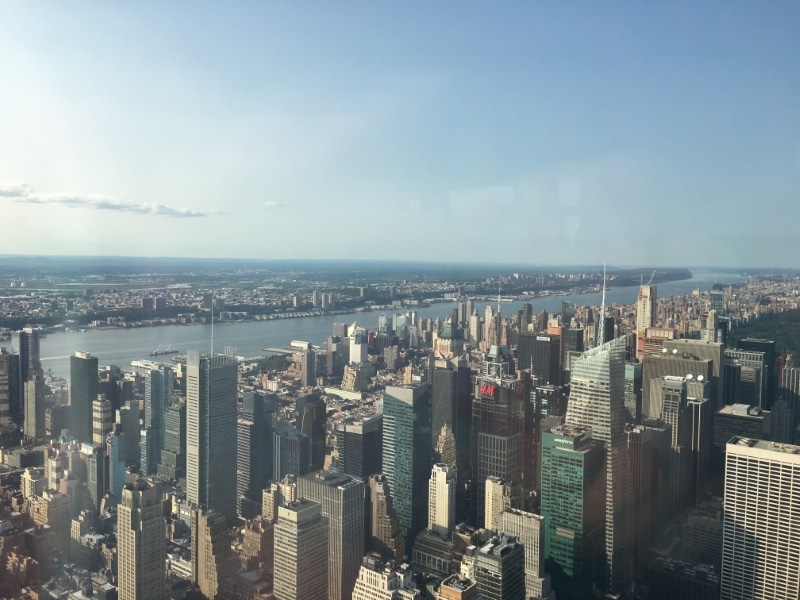
From my experience living long-term in Seattle, I’d say US$3,500 is the minimum, with US$4,500 and above to live comfortably. I’d also put it at around US$3,500 in big cities, while high-cost cities like New York are at around US$5,500. Smaller towns or the countryside? Much cheaper.
If you want a rough breakdown of the cost of living, here it is:
- Accommodation: According to Redfin, as of August 2025, the median housing sale price is US$443,019, which continues to rise at a slow rate. The average rent is US$1,755 per month. Long-term rentals (studio apartment, one-bedroom apartment, etc.) in a big city can cost around US$1,500 to US$3,000 or more per month, depending on the area, size, facilities, and demand.
- Bills and Utilities: The average is US$342.02 per month: US$209.97 for basic necessities like energy, water, and garbage, US$60.01 for a mobile phone plan, and around US$72.04 for internet. Still, it largely depends on the area you live in.
- Food: Around US$500 per month should be fine, assuming that you cook your own food and don’t dine out often.
- Transportation: US$100 per month is usually enough for public transportation. However, if you plan to use Uber/Lyft or own and drive a car, costs will be much higher, possibly reaching into the hundreds or even thousands.
- Healthcare: The healthcare system in the US is known for its high costs. The average health insurance cost per month is US$497. Without insurance, it costs about US$400 for a doctor visit.
Find out more:
Visa
To move to and live in the US, you need to have a valid visa. And to be honest, this will probably be your very first challenge. The US immigration system isn’t known for being easy or welcoming when it comes to granting visas.
The process is very strict, and you need to prepare carefully. Having the right documents and being ready to answer questions clearly and confidently is crucial.
In my case, I was fortunate because I had a confirmation letter from the university, which made the process much smoother. But I’ve seen friends struggle for months, sometimes even years, to get their visas approved.
Visas in the US are grouped into two categories: “non-immigrant visa” and “immigrant visa”.
There’s no equivalent to a digital nomad visa or other long-term stay types. In other words, it’s relatively difficult to immigrate or stay long-term in the US. Expats are generally on the non-immigrant H-1B and L-1 visas for work and the F-1 visa for study.
Here’s some brief info on the H-1B, L-1, and F-1 visas:
- H-1B visa is issued to skilled workers, i.e., professionals such as doctors, nurses, software developers, accountants, civil engineers, and university professors. It is a “dual intent” visa, meaning that it allows holders to pursue a green card without jeopardizing their non-immigrant status.
- L-1 visa is used by companies to transfer executives and managers from foreign offices to their US branches.
- F-1 visa is for international students who want to study at a university in the US (or, in some cases, a public school). You can also apply for Optional Practical Training (OPT) to find a job related to your major after graduation.
The US also offers the EB-5 Immigrant Investor visa, which requires you to invest US$800,000 in a Targeted Employment Area (TEA) or US$1,050,000 in other locations. The investment must meet the criteria set out by the US government, and your business needs to hire at least 10 full-time local American workers. It is the easiest pathway to getting a green card (permanent residency), provided that you have money and are willing to invest.
There’s also the visa-free policy that allows people from first-world European countries and some in Asia, like Japan and South Korea, to easily visit the country for short-term stays. However, they’ll still need a visa for long-term stays. People from poorer regions like Africa and Southeast Asia are usually required to apply for a visa, and approval rates are lower.
You can see a list of all visas on the US Bureau of Consular Affairs website.
To apply for a US visa, you have to submit an online application by filling out the DS-160 Form, pay the fees, and appear at a US embassy or consulate for an interview. Be prepared for the interview, as it’s conducted by a consular officer who can usually speak your language.
Tip: From my experience with having a Thai passport, I think that having a good financial status, no shady past, and visas from other countries (for example, Indian and UK visas) can increase the likelihood of getting a US visa.
Job Opportunities
While there are plenty of blue-collar jobs available throughout the US, big cities like New York and Los Angeles always have a high demand for white-collar jobs, especially in the finance, engineering, healthcare, and tech industries. Places like Austin, San Francisco, and Seattle are some of the major tech hubs.
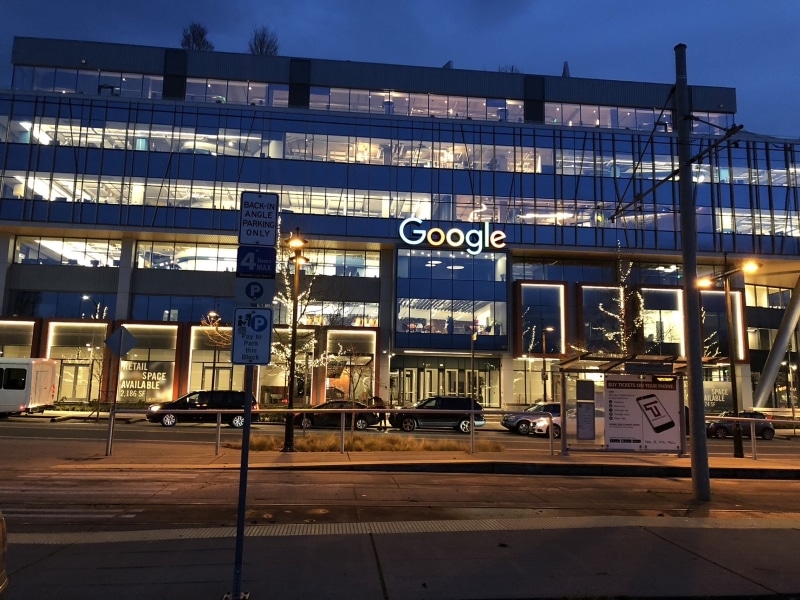
American employers typically use Indeed, LinkedIn, and Glassdoor to attract and recruit white-collar professionals and, to some extent, blue-collar workers. Government jobs are restricted to US nationals only.
Although STEM-related jobs (Science, Technology, Engineering, and Mathematics) are always in high demand, there’s also a growing demand for non-STEM jobs concentrated in large cities, especially in the social work, law, and political industries.
Healthcare
Medical treatment in the US is very expensive and typically requires insurance. So, it’s best to have private insurance on hand before visiting a hospital. A doctor visit without insurance costs around US$420.
You can’t simply walk into a hospital and expect to see a doctor right away. An appointment is always required and must be scheduled in advance, either online or by phone. The average waiting time for a patient to see a doctor is 24 days. However, it usually depends on the hospital’s location and the patient’s medical needs.
From my experience, while the conditions of hospital rooms are generally clean and comfortable, staying at a hospital is extremely expensive. According to NCHstats, it can cost around US$3,025 for one night.
Therefore, while it’s not always required by law to have health insurance, I strongly recommend that you always have coverage.
Unfortunately, to make things more confusing, the US has many different types of health insurance plans, each with its own rules and networks. You’ll likely come across terms like ObamaCare (Affordable Care Act plans), HMO (Health Maintenance Organization), PPO (Preferred Provider Organization), and POS (Point of Service). Each one works differently in terms of which doctors you can see, whether referrals are needed, and how much you’ll pay out of pocket.
Because the system is so complex, I won’t cover every type of plan in detail here. Instead, I recommend checking out our comprehensive guide to health insurance.
Related article: Cigna Healthcare Plans for Expats in the US: Should I Get It?
Food
Since the US was founded by European settlers, Western cuisine, heavy on bread, dairy, and meat, can be found across the country. Hamburgers, hot dogs, mac and cheese, chicken pot pie, coleslaw, and steaks are considered “all-American.” You can also find steakhouses, pizza places, and Starbucks almost anywhere.
If you are in the South, you’ll find Mexican restaurants in many places since it borders Mexico.
On holidays like Christmas and Thanksgiving, grocery stores sell turkeys and roast dinners, which are my favorite hot meals during winter.
You can find any type of food in the US, especially in large cities where many different ethnic groups live together.
Chinese and Thai restaurants, in particular, are common everywhere. However, some restaurants serve Americanized versions of traditional dishes that taste less authentic. I often spent time searching for the most authentic Thai dishes, which I usually found at Thai restaurants run by Thai people. I’ve come to believe that the most authentic dishes are usually at restaurants run by people who are part of their own food tradition.
Cuisines also have their own Americanized subcultures. For example, Chinese Americans developed their own “American Chinese cuisine.” Famous classic dishes include General Tso’s chicken and Mongolian beef. These dishes aren’t traditional in China, but they’ve become widespread in Chinese restaurants across the US.
Regional American cuisines can also be found in their specific areas. For instance, the Northeastern region has unique seafood dishes, such as Maine lobster and the New England clambake. The South has traditional fried chicken, cornbread, and barbecue.
Tipping
The tipping culture in the US is strong. You can choose not to tip, but many Americans see it as rude. The culture is deeply embedded in American social norms and is found in many service industries, including restaurants, bars, taxis, and hotels.
I had a few experiences where I didn’t leave a tip. The first time I visited the US—in San Francisco, to be precise—I ate at my hotel’s restaurant and didn’t tip. The servers began looking at me strangely as I walked out. On another occasion, I had dinner at a Chinese restaurant in New York. After we finished eating, the staff openly demanded that we tip, which was kind of silly, but that’s how it is.
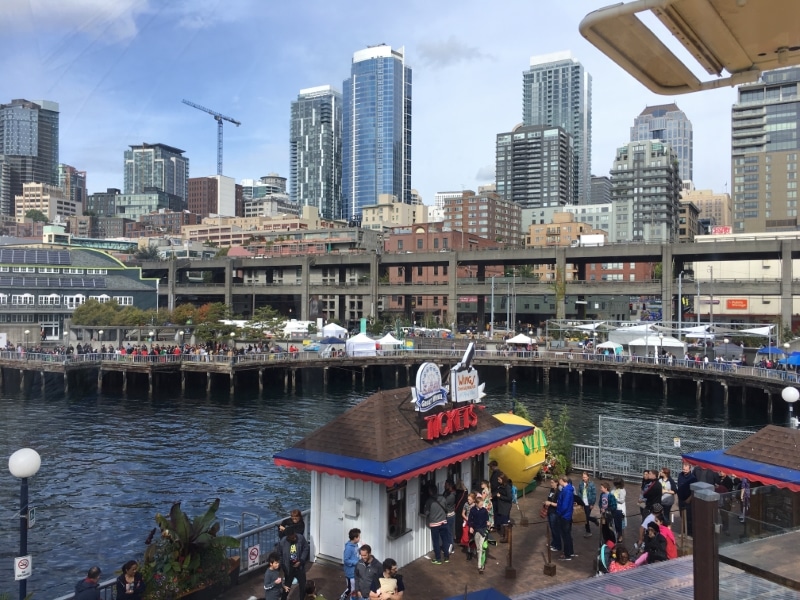
Let’s take a look at the average tipping expectations:
- Restaurants: a 15% tip is considered the minimum, while 18% or more is standard for good service. I usually go with 10% (which is seen as rude, by the way). You aren’t expected to tip at fast food restaurants and coffee shops, though.
- Food delivery: in apps like Uber Eats and DoorDash, 15–20% is expected for drivers. Some restaurants offer tipping options on their menus or include them in food orders.
- Takeout: 10%.
- Bartenders: US$1–2 per drink.
- Taxis: 15–20% is expected.
- Uber and Lyft: 10–20%. Keep in mind that drivers can rate you after each ride. Some drivers tend to give lower ratings to passengers who don’t tip, decreasing the chance of finding a driver next time you use the app.
- Hotel housekeeping: US$2–5 per day should be fine.
- Room service: 15–20%. I usually give them a US$5 bill.
- Valets: US$2–5.
What to Bring?
Important documents like your home country ID, passport, visa documents, insurance cards, medical records, vaccination records, and any other important documents and valuable items, such as jewelry, cash, and credit/debit cards, should be kept with you at all times.
Below is my usual checklist for a carry-on:
- Passport, visa, US government form (e.g., I-20 student certificate).
- Credit cards/debit cards.
- All forms of money (cash, checks, money orders). If the total exceeds US$10,000, you’ll need to file a CBP Form 6059B and FinCEN Form 105.
- Electronic devices, such as a laptop and mobile phone.
- Phone charger.
- Medical and vaccination records.
- Headphones for music.
- Prescriptions.
- Insurance cards.
Here are the things I usually pack in my checked baggage:
- Clothing and shoes.
- Winter clothing, such as a coat or jacket.
- Towels and household items.
- Adapters or converters for US outlets (honestly, I don’t use them much, but people from other countries might need them).
- Food, like instant noodles and snacks.
- Other items you’d like to bring.
DHL and FedEx are decent options for air shipping. I usually had no issues shipping my belongings to the US with DHL, but sometimes Customs inspected them for various reasons.
If you want to ship household items, such as furniture and appliances, it will cost a lot depending on the shipping method (air or sea) and the total weight and dimensions. In general, you need to find international shipping companies that will handle everything for you. You can use this form to contact them.
To find out more about shipping to the USA, read this article.
Bringing a Pet
Like many countries, bringing a pet into the US is tricky. The requirements vary depending on federal and state laws, the type of pet, the country of origin, and its health.
For example, if you want to bring a dog into the US, it must be at least 6 months old and have an ISO-readable microchip. You’ll have to fill out a CDC Dog Import Form and keep the receipt on hand when you arrive. Your dog must also “appear healthy.” If it doesn’t appear healthy on arrival, it can be denied entry and sent back.
If your dog is from a high-risk country, the requirements become more complicated, and a rabies vaccination certificate is usually required. You can check the full requirements on the CDC website.
Where to Live
The United States is very big, with many amazing places to explore. Since it’s impossible to cover every city, in this section, let’s focus on some of the major cities that are especially popular among expats.
New York, NY
New York City is the most populous city in the US.
NYC is divided into five districts called “boroughs”: Manhattan, Brooklyn, the Bronx, Queens, and Staten Island, each with its own vibe.
NYC has a subway system that operates 24/7, the tallest building in the US (One World Trade Center), and is home to several big companies, such as JP Morgan Chase, Goldman Sachs, IBM, and PwC.
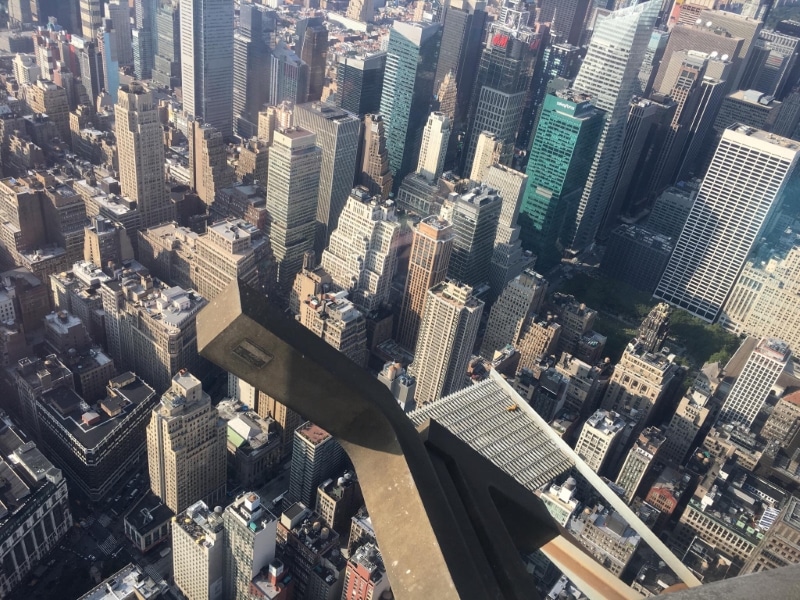
The views along the city’s many piers are beautiful, and river cruise dinners along the East and Hudson Rivers are among the most popular activities for tourists.
The city also has strong Italian and Irish American cultural influences in some areas. Still, you can find traces of different cultures throughout the city. One of the most popular street foods I personally like in NYC is their unique hot dogs. You should definitely try one at least once in your life.
Personally, the locals tend to be serious and fast-paced, as NYC has been a well-known financial hub for more than a century. There is high demand for professionals, especially in the financial and tech sectors.
NYC is the most expensive city in the US, with the cost of living 132% higher than the national average, according to Payscale. If you choose NYC, you’ll likely live in a high-rise apartment, so keep in mind that it’s not for anyone with a fear of heights.
Los Angeles, CA
Los Angeles is the second-most populous city in the US.
You need to be careful when getting around LA. Compton, known for its gang culture and high crime rates (as part of LA County), in my opinion, isn’t a place expats should be roaming around. On the other hand, Santa Monica and Beverly Hills are famous for their affluence and are home to many celebrities.
While cars are the main mode of transportation, the city also has a network of buses and rail. However, public transport is less widespread.
LA is also home to Hollywood, the heart of the American movie industry. The city has strong Latino and Asian cultural influences due to immigration. Ethnic enclaves are everywhere.
Unlike New York, which focuses on the financial sector, or Seattle, with its strong tech culture, LA locals mostly work in the service industry.
According to Payscale, the average cost of living is 50% higher than the national average.
Houston, TX
Houston has a strong Mexican and Latino cultural influence, and there are lots of Mexican restaurants in the city. Still, as in many US cities, you’ll find traces of other cultures as well.
In my opinion, Houston has a retrofuturistic vibe because of its space and atomic-era aesthetics. It’s home to the Johnson Space Center, an important hub for space exploration. In fact, “Houston” is the call sign astronauts use when communicating with mission control on Earth, because mission control is right here.
I like the South, especially Texas, because of its cowboy attitude and lovely Southern accents.
The cost of living in Houston is cheaper than in other large cities mentioned in this guide. According to Payscale, Houston’s cost of living is 6% lower than the national average because of low tax rates, no zoning laws, and cheap land.
Seattle, WA
Seattle is located in the Pacific Northwest. The city is very multicultural, with strong influences from Asian cultures, especially Chinese, Vietnamese, and Japanese.
It’s known as an innovative tech hub with beautiful natural landscapes, such as the views of Mount Rainier and Puget Sound. Seattle and its surrounding areas are also home to Amazon, Boeing, Microsoft, and Starbucks. The first Starbucks and Amazon Go stores opened here. It’s usually filled with tourists, though.
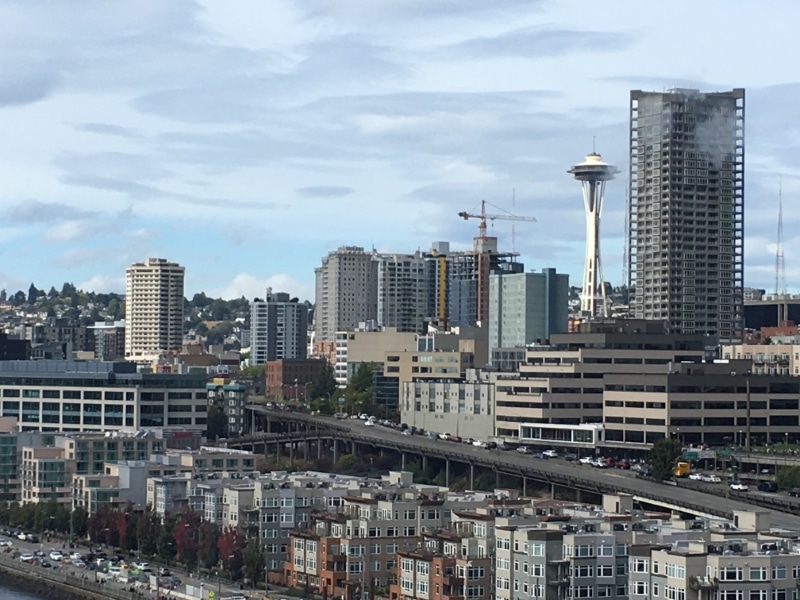
Because Seattle is a major tech hub, you’ll also find a large community of IT professionals, especially from India. Interestingly, many of them seem to drive Teslas, though I’m not quite sure why. It’s just something I’ve noticed while living here.
The weather is gloomy and rainy. If you head north and cross the border to Vancouver, BC, Canada, you’ll find the same gloomy and rainy vibe. That’s just how the Pacific Northwest is. And I’m not going to lie, the view of the Pacific Ocean on the 3-hour Amtrak Cascades train ride was amazing.
According to Payscale, the cost of living in Seattle is 45% higher than the national average.
Other Cities
These are just a few cities I find interesting. There are also plenty of other large cities in the US, for example, Chicago, Phoenix, Philadelphia, Boston, San Francisco, and many more.
Accommodation
There are several types of accommodation you can choose from:
Apartments
A furnished apartment usually comes with a fridge, freezer, microwave, bathtub, bed frame, and mattress. In an unfurnished one, the room comes with nothing except a kitchen counter, so you’ll need to buy and move furniture and appliances yourself.
Common apartment facilities typically include a lobby, laundry room (for apartments that don’t have in-unit washing machines), bicycle storage, storage room, mailroom and lockers, elevators, and a garbage room. Some apartments also have a fitness center, swimming pool, and parking lots.
Finding a parking space for your car is not easy in most American cities. You’ll need to rent one.
- Studios are one-room, one-bathroom apartments. They can be either furnished or unfurnished. The kitchen is usually squeezed into the living area. According to RentCafe, the average unit size is 457 square feet, usually ranging from 300 to 600 square feet.
- One-bedroom apartments come with one bathroom. They usually include a separate living room and a larger kitchen space. The average unit size is 735 square feet.
- Two- or more-bedroom apartments are suitable for families of three or more. They consist of two or more bedrooms and one or more bathrooms. The average unit size is 1,097 square feet.
- Serviced apartments have gained popularity in recent years. They offer hotel-style services like daily housekeeping, laundry, and 24-hour front desks, along with the features of an apartment.
Condos
A condo unit is similar to an apartment in layout and appearance, but you own it. Townhouse-style condos and detached condos also fall under condo ownership rules.
Houses
Houses are generally located in suburban areas outside city centers and typically start with at least one bedroom, one bathroom, a living room, and a kitchen.
There are no restrictions on buying, selling, or renting apartments, condos, or houses as a foreigner in the US, though the process can be more complicated than it is for a US citizen.
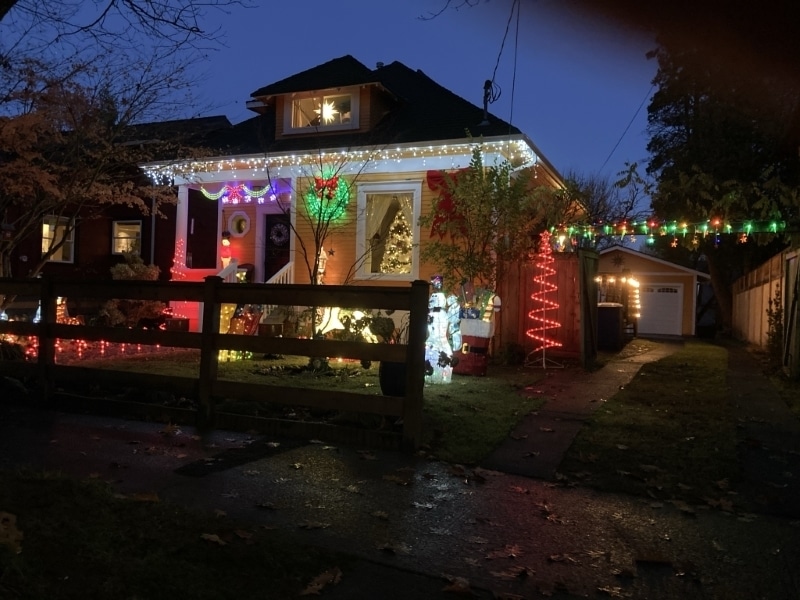
When buying, selling, or renting in the US, these documents are required:
- Your passport with the US visa in it.
- A Social Security Number (SSN) or Individual Taxpayer Identification Number (ITIN).
- A recent bank statement.
Zillow, realtor.com, and Redfin are the most popular real estate websites in the US for buying, selling, and renting properties.
Related article: Buying a House in Florida: A Step-by-Step Guide
Utilities and Bills
Utilities in the US include electricity, gas, water and sewer, phone, TV, and internet. In most cases, you’re responsible for paying for electricity, gas, and water yourself, regardless of whether you live in a detached house, a condo, or an apartment.
Some apartments may include utilities in the monthly rent, so you don’t have to do all the boring things yourself. I rented one of these apartments once and found it to be very convenient.
The payment system is different from one place to another, depending on the state, city, and area you live in. In NYC, for example, water bills are paid directly to the city government, while energy bills (meaning electricity and gas) are paid to Con Edison. This applies to other cities as well if the city government subcontracts utility services to corporations or other agencies.
For the internet, some apartments may include the fees in the monthly rent. In other types of housing, however, you’ll need to set up and pay for your own internet plan separately. For mobile phone service, you pay your bill directly to the provider.
Cell Phone
Your phone can be installed with a US SIM card without issues.
However, if your phone is from mainland China, it may reject a US SIM card. According to Global Starlink, mobile phones that are manufactured specifically for the Chinese market may not accept a US SIM card, either because of national security reasons or technical issues.
Your phone may also be locked to the carrier it was originally registered with in your home country. You’ll need to contact them to have your phone unlocked.
Compared to other countries, it’s not very strict when it comes to buying a SIM card in the US. You can buy one at the airport, mobile shops, online retailers like Walmart and Best Buy, and even at grocery stores. Otherwise, you can buy an eSIM, provided your phone supports it. Airalo is among the most popular eSIM providers.
There are two major types of mobile phone services:
- Prepaid: You buy a SIM card and pay upfront for a plan that includes a certain amount of data, calls, and texts for a specific period, usually 30 days. You are not locked into a contract with the carrier. You can change your plan or switch your carrier anytime you want.
- Postpaid: You pay a monthly bill and typically get unlimited data, calls, and texts. Postpaid plans will lock your phone into a contract with the carrier. You will also need to go through a credit check before you’re eligible for a postpaid plan. Most expats coming to the US for the first time will need to build up their credit scores.
You can also lease a phone from one of the major providers. AT&T Prepaid, for example, allows expats to lease a phone without a credit check if they sign up for a prepaid plan. The phone will be locked to AT&T until it’s fully paid off. I once leased an iPhone and paid a monthly installment that included a plan. It was roughly US$80 per month.
The top three providers are AT&T, Verizon, and T-Mobile.
Internet
As mentioned before, if you live in an apartment where internet is included in the monthly rent, there’s no need to worry about setup. However, if you live elsewhere, you’ll need to choose an internet provider, contact them, pay any upfront fees, schedule an installation, and then pay a monthly bill.
The top internet providers are Xfinity, Spectrum, T-Mobile, Verizon, and AT&T. Some areas may also have their own regional providers.
Getting a Bank Account
Foreigners can easily open a bank account in the US. Unlike other countries with cashless systems, people in the US regularly use checks, credit/debit cards, and cash. So keep in mind that having a local bank account is always better than not having one at all.
The documents required to open an account can vary from bank to bank and branch to branch. Some branches may not even require you to provide a Social Security Number (SSN) or Individual Taxpayer Identification Number (ITIN).
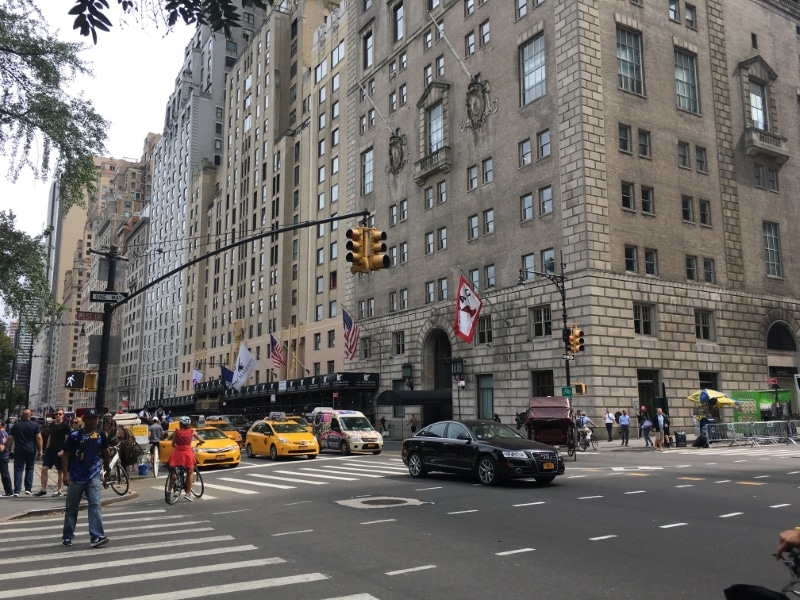
There are major banks out there, but some local banks also exist in certain areas or states. Furthermore, most banks allow you to open an account online. However, most bank websites require you to enter an SSN or ITIN. So, you may need to open an account in person, and it’s always best to choose a bank branch close to your home.
You should also schedule an appointment before visiting a bank branch. This can be done online or over the phone. However, as long as the bank isn’t busy, you can just walk in and request to open an account. The first time I opened an account, I simply walked in and had no issues.
Most banks will likely ask for the following documents:
- Photo ID (primary ID), such as your passport.
- Proof of address, such as a bank statement, utility bill, or rental agreement that clearly shows your address.
- Your SSN or ITIN, if you have one.
- Some banks will ask for a secondary ID. Your home country or US driver’s license, or your home country ID, will be fine.
- US phone number.
Once the branch staff open your account, they’ll give you a debit card. You can use it to withdraw cash from ATMs and pay for things.
The minimum deposit varies from bank to bank, ranging from US$0 to US$100 for most checking and savings accounts. Moreover, most banks in the US require you to maintain a minimum balance. If your balance falls below the requirement, the bank will start charging you a monthly maintenance fee.
For example, Bank of America will charge you US$4.95 per month if you have less than US$500 in the account.
Below are some of the major banks you can find in the US:
- Bank of America
- JPMorgan Chase
- Wells Fargo
- U.S. Bank
- Citibank
- Capital One
Another important point to keep in mind is that after you leave the US, there’s a high chance you’ll need to close your US bank account once you no longer have a valid US address. After you lose your US address, banks may send you a notice giving you 30 days to close the account. This doesn’t only happen to expats but also to Americans living abroad.
Find out more: Opening a Bank Account in the US: A Guide for Non-Immigrant Visa Holders
Getting a Credit Card
Getting a credit card as a foreigner is tricky. First, you’ll need to have an SSN or ITIN. Second, you’ll need a good credit score.
Here are the general requirements:
- Photo ID.
- Proof of address.
- A bank statement.
- Financial details, such as credit scores and annual income reports.
If you don’t have a US credit score, you can either build it from the ground up by paying your bills on time or apply for a secured credit card. A secured credit card requires a refundable security deposit and is much easier to get compared to a regular credit card. It’s a great option if you want to build credit.
Sending and Receiving Money
Sending and receiving money in the US is pretty easy. ATM and wire transfers are common, but you can also use your bank’s mobile app. Other third-party payment apps like Zelle, Venmo, and Cash App are widely used. If you have an iPhone, you can also use Apple Pay.
If you receive a check, it’s best to deposit it at a branch as soon as possible. Checks in the US typically last 6 months (180 days). I once forgot to deposit a check, and it became stale, so I had to ask for a reissue. In some banks, you can also use the bank’s app to deposit it.
Sending and receiving money internationally is also easy. Although transfer fees usually depend on the bank and the type of account you have, sending money back home or anywhere else is generally not difficult.
Wire transfer is the most conventional way of sending money internationally. Just make sure you have the recipient’s bank SWIFT code and account number. On the other hand, Wise is the best option if you want to save money. It’s easy to use, has low fees, and transfers are much faster.
Your Kids and Schools
Whether your child can enroll in a public school largely depends on their visa and residency status. If your child is on an F-1 study visa, you’ll need to pay full tuition, and they can only attend a public school for up to one year.
If it’s a private school (including an international school), they can attend as long as they want, regardless of the type of visa they have. Tuition fees vary depending on the institution and program.
If they’re on an H-4 dependent visa, they can enroll in a public school for free.
Taxation
Things can get complicated, but I will keep it brief. According to the IRS, foreigners earning money in the US have to file Form 1040-NR every year. You’ll also need either an SSN or ITIN.
Taxes are imposed by local, state, and federal governments. That said, you’ll likely have to pay taxes at all three levels if you stay long-term.
Here is a rough breakdown of the types of tax you’ll encounter:
- Income tax: The federal government imposes a tax on the income you earn, and most states also have their own income taxes. These taxes are withheld by your employer and are progressive, meaning the more you make, the more you pay. You can view the federal income tax rates and brackets on the IRS website.
- Payroll tax: This tax is imposed on both employers and employees by the federal government and is a flat rate of 7.65%. It’s used to fund the Social Security system (i.e., Medicare and Medicaid). If you’re on an F-1 or J-1 visa and on OPT, you don’t have to pay payroll tax.
- Sales tax: The US doesn’t have a federal sales tax, so each state imposes its own. How much sales tax you pay when buying goods depends on the state you live in, with Oregon, Delaware, Montana, and New Hampshire having no sales tax at all.
- Property tax: May be imposed by local governments.
- Other taxes: Sometimes your city government will implement a new tax. For example, while I was in Seattle during the COVID pandemic, there was a “temporary local fee” of US$2.50 per food delivery on Uber Eats. I believe Chicago also did something similar.
If you have to pay taxes back to your home country for “income, war profit, and excess profits,” you can claim the Foreign Tax Credit (FTC) to prevent double taxation. You’ll need to hire an accountant in this case.
Find out more:
- A Beginner’s Guide to Income Taxes for Resident Aliens in the US
- TurboTax Review: Is It Worth the Money?
- A Beginner’s Guide to US Taxes for H-1B Visa Holders
Making Friends and Exploring
Making friends in the US is easy. You can meet people at nightclubs, bars, local activities, or even right next door in your neighborhood. It’s common to strike up a conversation with a stranger, and usually, they won’t mind at all. While heading out for groceries, I often talked to homeless people on the streets and gave them a few coins.
In my personal experience, Americans are generally outgoing and fun to hang out with. Most of them aren’t introverted and will often start a conversation with you. If you’re introverted, you can simply stay in your room and chat with strangers online through friendship and dating apps, or even anonymous websites.
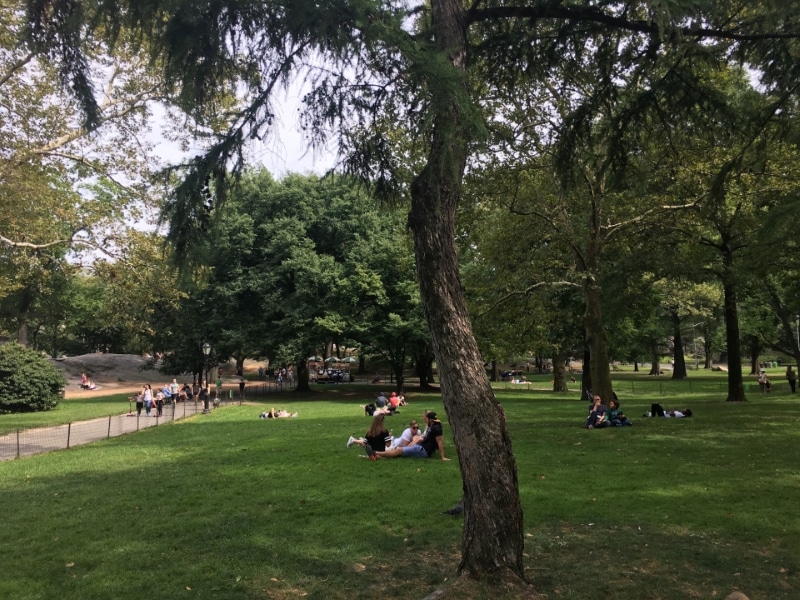
Gaming culture in the US is very active. You can join a Battlefield multiplayer match with total strangers and easily end up making new friends. As a gamer who usually plays strategy and FPS games, I personally think that the gaming community in the US is sociable and entertaining. You can also go to a language or cooking class to meet like-minded individuals.
The US is a large country with vastly different geography and culture, and there’s always something you can find enjoyable regardless of where you go. You can use websites like TripAdvisor and Yelp to explore attractions, restaurants, and activities in the area you live in or plan to visit.
Transportation
Buying, renting, and leasing a car are possible in the US. It’s best to have an international driving license at hand, but you can get a US driver’s license as well. The requirements and process of obtaining a driver’s license largely depend on the state you live in but usually involve passing a written test and a driving test.
According to MoneyGeek, buying a new car can cost around US$48,841. Used car prices vary and may be much lower. Also, just like applying for a credit card, you’ll need good credit to lease a car in the US.
All in all, renting may be the most appropriate choice if you don’t want to go through all the lengthy processes. Renting a car usually requires a valid driver’s license, your photo ID, and a deposit.
Since towns and suburbs in the US are often spread out and located far from one another, it’s natural that Americans tend to use cars outside of cities.
Public transit systems do exist in large cities like NYC, Los Angeles, Houston, Seattle, and others. From my experience, I used to get around Seattle by light rail. It’s one of the cleanest transit systems I’ve been on in the US, while the NYC subway was so dirty that I basically stopped using it and switched to taxis instead.
Uber and Lyft are the most popular ride-hailing apps. Conventional taxis also exist, but their rates vary greatly by city. In some cities like NYC, fares can be quite high, whereas they’re much cheaper in Seattle.
Timeline
The process of moving to the US can vary by person. Usually, it takes plenty of time, from months to a year, depending on your goal.
Below is the timeline if you’re going to be on an H-1B visa:
1 year out:
- Apply to companies that sponsor H-1B visas.
- Get a passport if you don’t already have one.
- Prepare documents for your upcoming visa application.
- Start looking at flight tickets.
- Start researching schools for your kids.
6 months out:
- Apply for your H-1B visa.
- Purchase flight tickets.
- Apply to schools for your kids.
- Make sure your pets are vaccinated and microchipped.
3 months out:
- Start listing the belongings you want to bring to the US.
- Sell your possessions and financial assets, or leave them as they are.
- Withdraw your money and secure your valuable items, just in case.
- Contact a realtor and sign a lease agreement or buy a house.
1 month out:
- Pack up and ship your things.
- Exchange your money for US dollars and have a debit card at hand.
- Inform your bank that you’ll be in the US, so they don’t lock your cards.
Now, on to You
That brings us to the end of this comprehensive guide. I hope it has provided a complete picture of what it’s like to live in the US. Now it’s your turn to plan and make your move. Live the dream of your life!


